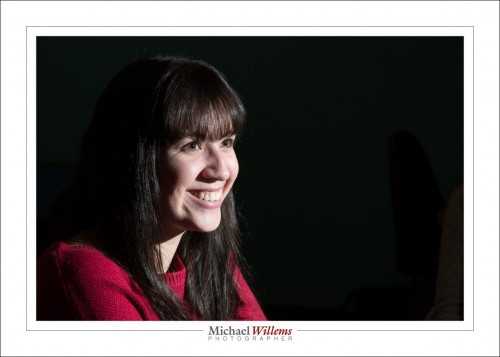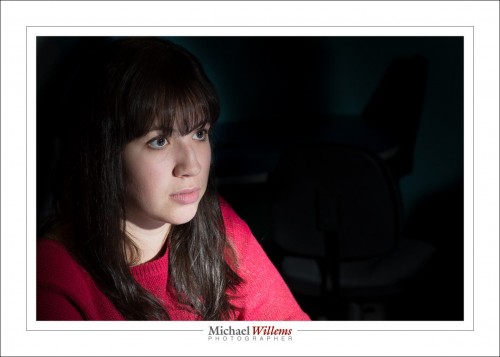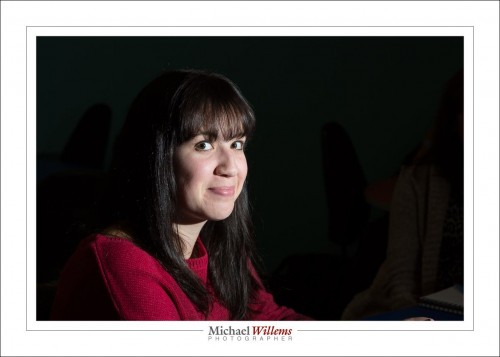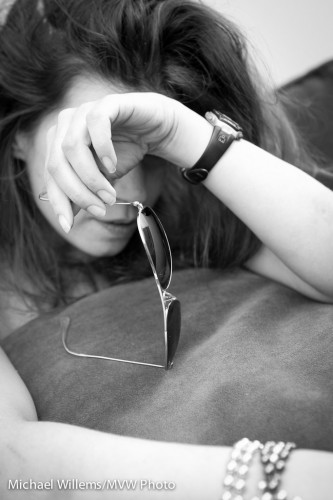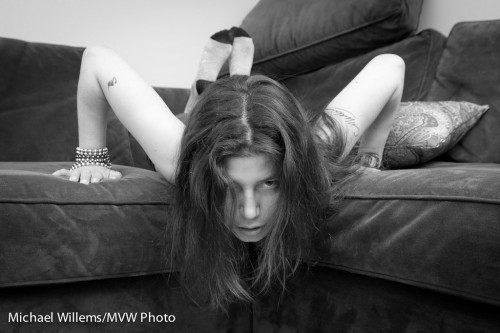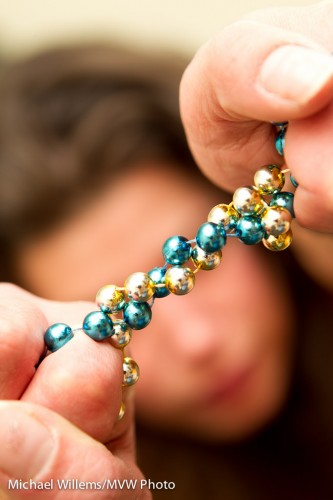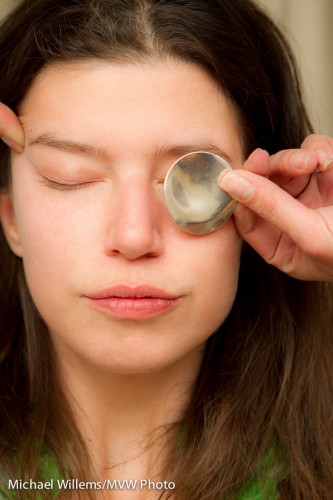Sunday morning, around mid-day, in downtown Oakville I shot a fashion shot for a magazine front cover.
Outdoors fashion is, as always, a matter of many things coming together at once. One of those is light. Without light, even on a wonderful overcast day (wonderful in photo terms), the image lacks something. The mother and daughter models lack a certain je-ne-sais-quoi.
Actually I do know – they lack light:
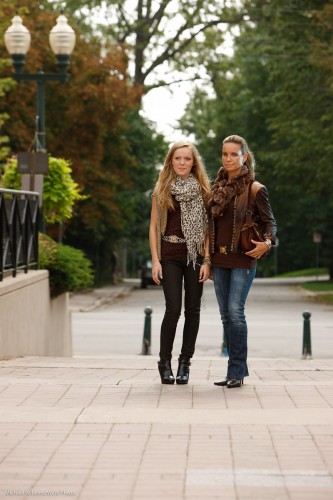
So we add a flash. I used a Bowens 400 Ws strobe, although I could have used speedlights. The sequence is as follows:
- I set my camera to manual.
- I select 1/200th second and 100 ISO.
- That gave me, on this particular day, an aperture of f/5.6 for a nice saturated background. (To arrive at this, I can use my in-camera meter or my light meter set to ambient.)
- I now add the strobe, set it to 80% power about 6ft away, and test this with the meter (now set to flash mode). Well have you ever: the meter immediately indicates f/5.6! (This is just experience. If you are less experienced, no worries – just turn the light up and down until you do read f/5.6).
That gives me:
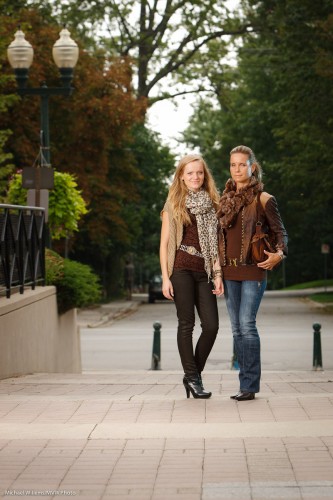
If I want the background a little darker I change the speed to 1/250th (still in my flash sync range):
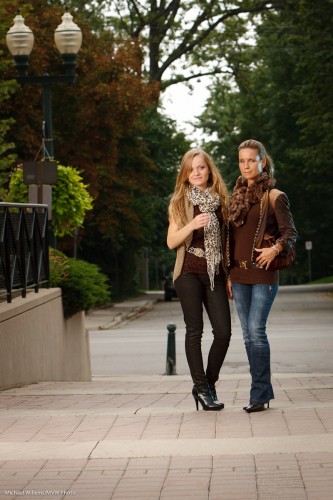
Okay, we are set. If the sun comes out a little more, I go to 1/250th, and if it gets a tad darker I go to 1/160th.
The idea of this shot is autumn – so we now bring out the props. Autumn flowers and fruits and vegetables now gives us this:
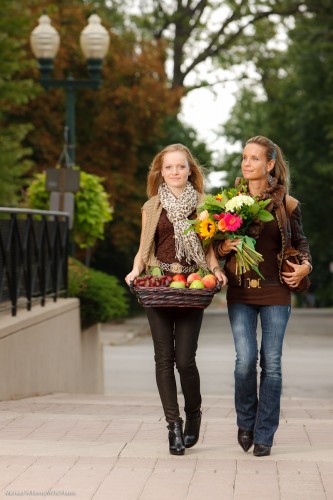
Notice the speedlight with a blue-green gel as accent/hair light on our right? The speedlight was held by Kurt, who assisted on this shoot, and was set to 1/4 power (again – experience tells me that setting will probably work – and it did).
The final step is to make that an egg-yolk yellow gel instead of a blue-green gel – yellow accentuates the late day setting sun feeling that is synonymous with autumn. (I use Honl Photo gels).
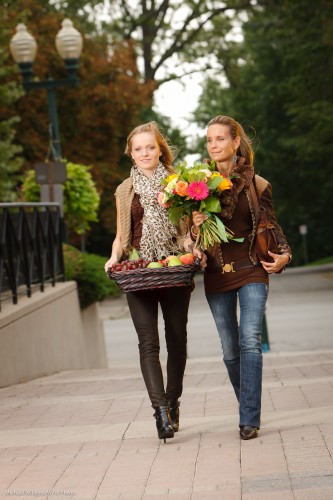
And there we have the image. (In fact this is not quite the image – that one went to the client, and I do not like to publish images in this open forum before the customer has used them!). Also – note that these are shot a little wide since this is for a magazine front page, so there needs to be space for text.
Notes:
- Umbrellas and softboxes outdoors will be blown away, so hold on tight.
- If the models move, use AF-C/AI Servo focus mode.
- With two models, be very aware of the danger of blinking – one of them will blink in very many images, so check, and take many images.
The setup was as follows:
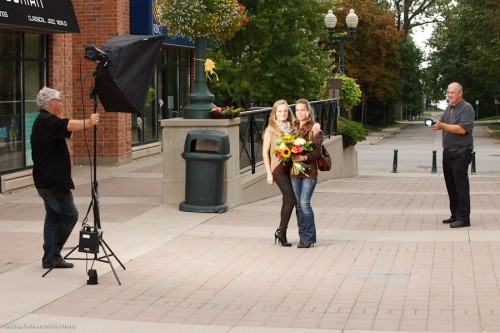
Fun shoot.
(And perhaps also, a shoot that explains why photography costs money: A car full of equipment, props that get used just once, two sets of clothing, and five people taking several hours. All this costs money!)

